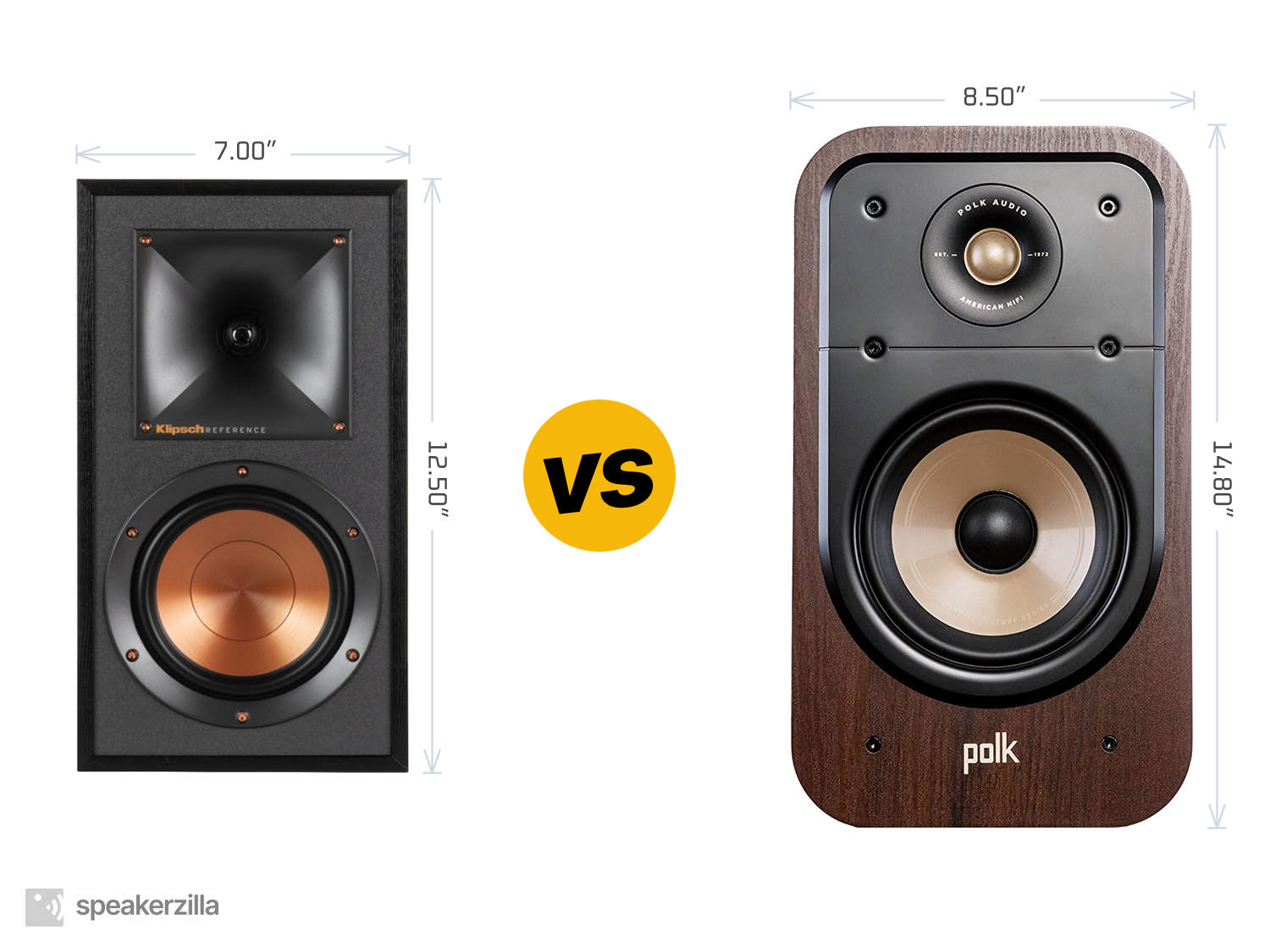Klipsch R-15PM vs. Polk Signature Elite ES20

| Klipsch R-15PM Powered Monitor Speakers | Polk Audio Signature Elite ES20 Bookshelf Speakers |
| MSRP | |
| $500 | $400 |
| Dimensions (H × W × D) | |
|
12.50” × 7.00” × 9.88” 318mm × 178mm × 251mm |
14.80” × 8.50” × 13.80” 376mm × 216mm × 351mm |
| Power Type | |
| Powered | Passive |
| Frequency Response | |
| 62-24,000 Hz | 44-40,000 Hz |
|
Amazon.com
|
Amazon.com
|
Key Takeaways
TLDR Summary: In the world of compact high-fidelity, the Klipsch R-15PM and Polk Audio Signature Elite ES20 speakers represent two very different philosophies. The R-15PM offers a self-contained experience with built-in amplification, a nod to convenience and simplicity, while boasting Klipsch's signature horn-loaded tweeter for a crisp, clear soundstage. In contrast, the Polk ES20 stands as a passive offering requiring external amplification but delivers a warm and rich performance with its proprietary Dynamic Balance drivers. Choosing between them hinges on listener preference for the convenience of powered monitors or the customizable potential of passive bookshelf speakers.
Speaker Comparison
When it comes to high-fidelity audio within a cozy space, bookshelf speakers are a perennial favorite among audiophiles and casual listeners alike. Two of the standout contenders in this market are the Klipsch R-15PM Powered Monitors and the Polk Audio Signature Elite ES20 Bookshelf Speakers. Despite sharing a form factor, they differ in design philosophy, features, and sound characteristics, making each a unique proposition for the discerning listener. Klipsch is known for their assertive sound and efficiency, while Polk often strikes a balance between performance and subtlety.
Design and Build Quality
The Klipsch R-15PM speakers exude a classic charm with a copper spun woofer that immediately catches the eye, encased in a sleek, black cabinet that hints at the company’s long-standing tradition in speaker design. In contrast, the Polk Audio Signature Elite ES20 speakers boast a more contemporary look, with their gracefully curved edges and their patented Power Port technology visibly integrated into the cabinet design. Both sets of speakers are well-built, but they cater to different aesthetic preferences, Klipsch leaning towards a retro vibe while Polk appeals to modern sensibilities.

 (at Amazon.com)
(at Amazon.com)Connectivity and Features
The Klipsch R-15PM is a powered speaker, which means it has an amplifier built in, offering the convenience of direct connection to sources without the need for a separate amplifier or receiver. This feature set includes Bluetooth connectivity, a digital optical input, an analog RCA input, and a USB input for a variety of interfacing options. The Polk ES20, being passive speakers, requires an external amplifier or receiver to power them, which may appeal to those who have a preference for a particular amplification character or who may already own a component they wish to use.
Sound Performance
Sound-wise, the Klipsch R-15PM speakers deliver the brand's signature lively and dynamic sound with an emphasis on clarity and efficiency. Their horn-loaded tweeter design ensures an expansive soundstage and precise imaging, making them ideal for listeners who love to crank up the volume and feel the immediacy of the music. The Polk ES20s, by comparison, offer a rich and balanced audio presentation with an emphasis on natural sound reproduction, thanks to their well-engineered drivers and the aforementioned Power Port technology which enhances the lower frequency response.

 (at Amazon.com)
(at Amazon.com)When it comes to bass performance, the Klipsch R-15PMs, despite their smaller woofer size, manage to produce tight and punchy bass, although they might lack the depth that some bass-heavy music would benefit from. The Polk ES20s, with their larger drivers and Power Port, deliver deeper and more pronounced bass, which can be a boon for genres that thrive on a strong low-end presence. It's worth noting that neither speaker overwhelms with bass; they maintain a controlled and well-integrated low-end.
Compare to similar speakers
In terms of midrange, the Klipsch R-15PM speakers provide a clear and present midrange that brings vocals and acoustic instruments to the forefront. The Polk ES20s are similarly adept in the midrange, though they offer a slightly warmer sound that may be more forgiving on certain recordings. This warmth does not come at the cost of detail; the Polk speakers still ensure that textures and nuances in music are well-represented.
On the higher frequencies, the Klipsch R-15PMs once again exhibit their horn technology with crisp, extended highs that can handle the sparkle of cymbals and the intricacies of strings with aplomb. The Polk ES20s are no slouches in the treble department either, providing a smooth and non-fatiguing treble response that will suit long listening sessions well. Ultimately, the choice between the Klipsch R-15PM and the Polk Audio Signature Elite ES20 bookshelf speakers will come down to personal preferences in sound signature, aesthetics, and whether the convenience of powered speakers trumps the customization possibilities of passive setups.
- Klipsch R-15PM reviews and FAQs
- Polk Signature Elite ES20 reviews and FAQs
Check Current Prices: |
|
|
Amazon.com
|
Amazon.com
|
Affiliate Disclosure: As an Amazon Associate, we earn from qualifying purchases.

